|
导读:本文是一篇关于粘土、导致、滑坡、挡土墙倒塌、基建失败、等问题的介绍性Research Proposal。 由粘土性质变化导致,比如由于水、温度、受力因素,导致了一些自然灾害和者事故。
目录
1.背景2
1.1滑坡分类2
1.2山体滑坡的原因5
2.粘土性质的影响6
2.1粘土中水含量的影响6
2.2施加力对粘土的影响8
3.拟议计划9
参考10
1. Background 2
1.1 Classification of landslides 2
1.2 Causes of landslides 5
2. Effect of clay property 6
2.1 Effect of water content within clay 6
2.2 Effect of applied force on clay 8
3. Proposed plan 9
Reference 10
图表
图1泥石流示意图2
图2地球流动示意图2
图3碎片3的示意图
图4 sturzstrom 3的示意图
图5浅层滑坡的示意图4
图6深层滑坡的示意图4
图7滑坡频率与年平均降雨量的关系7
图8滑坡频率与坡度角的关系8
图9坡度分布与岩石类型9Table of Contents
Table of Figures
Figure 1 Schematic diagram for debris flow 2
Figure 2 Schematic diagram for earthflows 2
Figure 3 Schematic diagram for debris slide 3
Figure 4 Schematic diagram for sturzstrom 3
Figure 5 Schematic diagram for shallow landslide 4
Figure 6 Schematic diagram for deep-seated landslide 4
Figure 7 Frequency of landslide vs. mean annual rainfall 7
Figure 8 Landslide frequency vs. slope angle 8
Figure 9 Slope distribution vs. rock type 9
Effect of clay property on landslides粘土性质对滑坡的影响
Background背景
1.1 Classification of landslides滑坡分类
滑坡或山体滑坡被定义为地质时代的一种现象,包括各种地面运动,如浅层泥石流,斜坡深度破坏和落石等。山体滑坡在陆上,近海和沿海等地区很常见。重力是滑坡的主要原因,其他因素也影响原始坡度的稳定性。由于前置条件因素而形成的特定条件使得斜坡或区域容易发生故障,并且由于特定条件而触发了实际滑坡的释放。有不同类型的滑坡,深层滑坡,浅层滑坡,sturzstrom,碎片滑坡,地球流动和泥石流。
Landslide or landslip is defined as a phenomenon in geological era including various ground movements such as shallow debris flows, deep failure of slopes and rockfalls etc. Landslides are common in areas like onshore, offshore and coastal. Gravity is the main cause of landslide though, other contributing factors also affect the stability of original slope. Specific conditions built up because of pre-conditional factors make the slope or area prone to failure easily, and the releasing of actual landslide is triggered because of specific condition.There are different types of landslides, deep-seated landslide, shallow landslide, sturzstrom, debris landslide, earthflows and debris flow.
当斜坡材料被水饱和时,泥浆流被释放,汽车,房屋和树木可能被所产生的泥浆吸收,因此支流和桥梁可能被引起的洪水阻挡。碎片很容易被误认为是暴洪,而实际上却完全不同。阿尔卑斯地区的基础设施和建筑物受到严重破坏,因为泥泞的泥石流也造成了人类的生命。泥石流有时是开始与坡相关的因素造成的,并且可能阻塞河床,这可能会暂时造成水堵。与此同时,由于蓄水的失败也产生了多米诺骨牌效应,并且流量的增加也体现了流量。固液混合物的密度可达2吨/立方米,速度可达14米/秒(Arattano和Franzi,2003年)。第一次严重的道路中断是由于泥石流造成的,因为泥土碎片的影响被低估了。
Debris flow is released when the slope material is saturated with water, the cars, houses, and trees are possibly picked up by the resulting slurry, therefore the tributaries and bridges are possibly blocked by the caused flood. Debris is easily mistaken as flash flood, while they are totally different actually. Severe damage to infrastructure and structures in alpine areas are caused because of the muddy-debris flows, the human lives are claimed also. Debris flow is sometimes the result of starting slope-related factors, and possibly dam the stream beds, which may cause the water blockage temporarily. At the same time, domino effect is created also because of the failure of impoundments, and the increasing of flowing mass’ volume also attributes. Densities up to 2 tons/m3, velocities up to 14 m/s can be reached for the solid-liquid mixture (Arattano and Franzi, 2003). First severe interruption of road is caused for debris flow, and damage happens also because of underestimation of the influence of mud-debris.
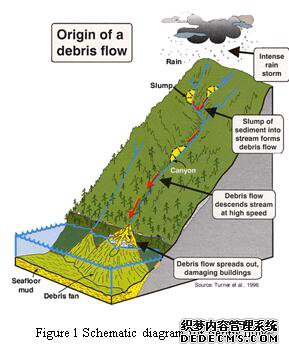
Figure 1 Schematic diagram for debris flow
Earthflows move at speed ranges from slow to fast, which consist of viscous flow of fine-grained and saturated materials. Speed range from 0.17 to 20 km/h is typical. Earthflows are similar with the mudflow, while the speed is slower compared with mudflow, and more solid material is contained. They are more different from fluid flows, because of their higher speed. Pyroclastic, fine-grained, silt and fine sand, and clay are all susceptible to earthflows. The water content in the earthflow decides its velocity and higher water content causes higher velocity.
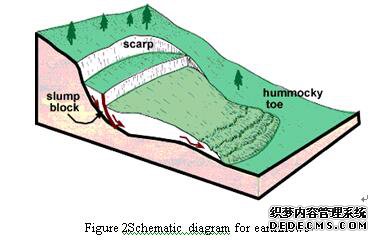
Figure 2Schematic diagram for earthflows
For debris landslide, it is chaotic movement of debris, soil and rocks mixed with ice and/or water. The incoherent mixture of smaller vegetation, broken timber and other debris caused by the saturation of thickly vegetated slopes triggers the debris landslide easily. It is different with debris avalanches, because it is slowerasless water content exists in debris landslide. Debris avalanches cause steep coastal cliffs easily, which happen normally on the oceans island volcanos’ submerged flanks, such as the Cape Verde Islands and Hawaiian Islands. Big rocks initiate the debris landslides firstly, which is the top part of slide and gradually break apart when they slide to the bottom. Thus the debris slides are slower than the debris avalanche, as latter has higher water content, and steeper slope.
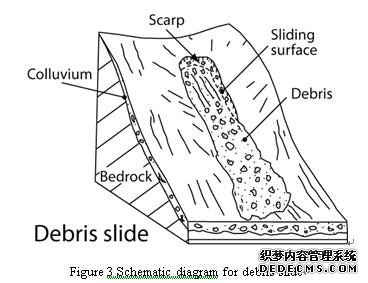
Figure 3 Schematic diagram for debris slide
Sturzstrom is a kind of rare landslide, which is not easy to be understood with long run-out. These slides are usually flowing slowly over low angle terrain, even slightly uphill.
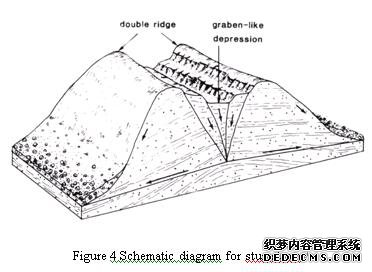
Figure 4 Schematic diagram for sturzstrom
Shallow landslide is defined as slide with superficial sliding surface from few decimeters to meters. Failures of road out-slopes, debris flow and debris slides are usually included in shallow landslide. The areas that have slopes with low permeable bottom soils under the high permeable soils are where the shallow landslides usually happen. The high permeable soils create high water pressure in the upper soils, as the bottom and low permeable soils trap the water in the shallower. Because of the filled water in the top soils, the slopes are unstable which are prone to slide over the bottom soils which are low permeable.
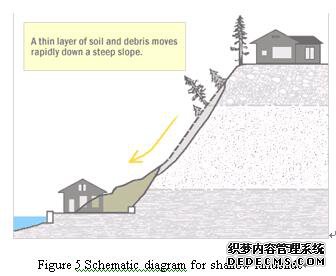
Figure 5 Schematic diagram for shallow landslide
As for the deep-seated landslide, the sliding surface is located deeply below the depths of the roots of the trees, which are normally greater than ten meters. Weathered rocks, deep regolith are involved in the deep-seated landslides. This kind of landslide happens usually in the region which is tectonic active like Zagros Mountain in Iran. They move several meters per year, which are very slow.
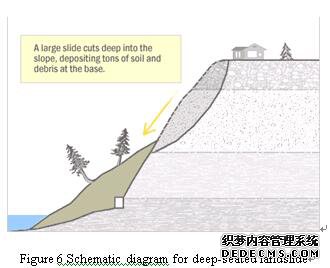
Figure 6 Schematic diagram for deep-seated landslide
1.2 Causes of landslides#p#分页标题#e#
The instabilities of the slopes are the direct reason of landslides, normally for a landslide, there are one trigger of landslide and one or more landslide causes. There is subtle difference between these trigger and cause, but they are different. The causes of the landslide are why the landslide happens in that place at the specific time, which includes factors associated with human activity, physical factors, morphological factor and geological factors. All the causes can be considered as the reasons for the instabilities of slope, while the trigger is just for initiating landslide. Usually it is easy to determine the trigger of the landslide after the occurrence, while it is not so easy to tell the specific reason for landslide, and it is not easy either to determine the nature of landslide trigger before the happening of movement event.
Considering about the geological causes of landslides, the earthquakes, rainfall and snow fall, material contrasts, permeability contrasts, adversely orientated discontinuities, jointed or fissure materials, sheared materials, and weathered materials are the major reasons for landslides, in which the rainfall and snow fall, permeability contrasts are relevant to the water content of clay as the materials contained in the flows.
And for the causes defined in the morphological part, erosion, vegetation change, slope loading, subterranean erosion,erosion of lateral margins, glacial erosion, wave erosion, fluvial erosion, rebound, uplift and slope angle are considered at thesame time, in which the slope loading and slope angle are relevant with the applied force on the clay.
As clay is one of the main components of landslide, its influence on the triggering of landslide is worthy of deeper investigation, such as its temperature, water content and the force applied are the main factors that need further consideration. Because as shown above, the velocity of landslides are normally decided by the water content, lower water content leads to higher velocity of landslides, which is due to the lower interaction force between the materials contained in the flow. As for the temperature, it may influence the activity of the water inside the flow, such as it is ice or water, the triggering of landslide may be influenced, and the velocity of the landslide is also influenced if it is triggered already. For the force applied, like been mentioned above in the classification of landslides, the angle of the slopes make major difference on the landslides, normally the steep slope causes higher possibility of triggering of landslide, because the applied gravity due to steep angle, and the velocity of landslide is also influenced by the angle of slope, because of the accelerate is dependent on the angle of the slope also, as larger angle of slope leads to higher accelerate of the flow.
Therefore, the effect of the temperature, applied force and water content within the clay is worthy of study, thus to help to prevent the happening of more landslides.
Effect of clay property
The type of soil affects the failure of slope a lot, it has been reported that the silty clays and clay lead to instabilities of slopes in most cases.This can be attributed to the fact that they are prone to absorb too much water, and the permeability of the clay is low. The distribution of water is also influenced by the silty clays and clay.
The sandy soils are not easily to cause the failure of slope because of their relatively high permeability, the pore-water pressures within the soil will not reach the critical levels, and they are able to maintain the relatively similar mechanical strength when they are dry. The instabilities arisen from the cohesion-less sandy soils are very shallow, thus the slopes with sand as bottom are easily to equilibrate as the grains are prone to roll downslope quickly. Talus slope is formed at the angle which offers little possibility of catastrophic failure, unless under the conditions of seismic shaking or high precipitation.
Nevertheless, the mechanism of failures caused by clays (cohesive soils) is quietly different with the sandy soils’. Curved surface or well-defined planar are where failures occur usually, the material within behaves more like a unit than the material within the sandy soil. The relative susceptibility to landslides in regions of well-developed, deep soils is determined by the structure and composition clayey layers. While for the regions where the soils are shallow, the critical plane of weakness is provided because of the clay seam in the underlying bedrock, thus the instability is prone to develop.
According to the report done by R. A. Roth(ROTH, 1983), the soil data collected for the San Mateo County was studied to dig more on the effect of soil type on landslide, thus more on the effect of clay property on landslide(Jennings et al., 1977).
Basically, there are different sources of applied forces on the clay.The most popular one is from the natural gravity, which is relevant to the angle of slope. Slope angle is surely a parameter that affects the landslides’ distribution. From the intuition, the increasing of slope angle leads to high likelihood of occurrence of landslide, which could be demonstrated mathematically in the case where the length of uniform slope is infinite, and the possible failure plane is paralleled to the slope. The shear stress on the possible failure plan is easily to be expressed as
τ=ρgh(sinα)Equation 1
No other force except the force from gravity is taken into account. The τ is shear stress, ρ is the density of material within the soil, g is the gravity caused acceleration, h is the vertical height of sliding plane, while the α is the angle of slope.
So as shown in the equation above, increasing the slope angle and increasing the weight of the column (such as surcharge or water saturation) lead to higher possibility of failure; while for the same material considered, the possibility for failure increases with increasing slope angle.
2.1 Effect of water content within clay
There are several factors that affect the water content of clay, like the soil type (silty clay or sandy soil)(Brabb, 1987), and the rainfall also affects the water content of clay. Indeed, these two factors have been studied over a long time, and the data obtained from different areas reveals that there is a positive relation between landslide occurrence and rainfall. Like reported byR. A. Roth(ROTH, 1983), the higher values of mean annual rainfall lead to higher landslide frequency, which is consistent with the previous studies that showed occurrence of slope movements that are significant when the annual rainfall reaches over 10-15 inches.
And the study on relationship between rainfall and landslide frequency was done with caring about the influence of other factors. The landslide frequency decreases when the mean annual rainfall reaches 36-40 inches, which means that there are other factors that influence the landslide occurrence. Because in theory, the increasing of precipitation should lead to the increasing of landslide frequency, so there must be some other factors that are caused by increasing rainfall influenced the landslide frequency at the same time. The factors like density and type of vegetation are related to rainfall, so they may play a role. The relevant study on the factors have been done by R. A. Roth also(ROTH, 1983), which shows that the greater extent of vegetation is caused because of the higher rainfall 36-40 inches, the vegetation helps to stabilize the soil thus to reduce the frequency of landslide, this could explain the reduction of landslide frequency in the areas receiving 36-40 inches rainfall. The sequence of storms and intensity of the rainfall influence the frequency of landslide also, there would be more runoff with the increasing intensity of storms(Legget, 1939).
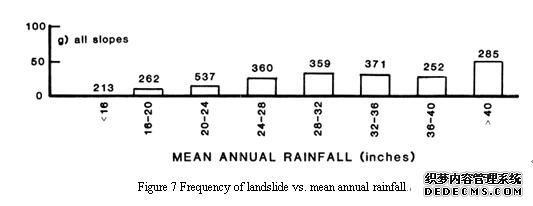
Figure 7 Frequency of landslide vs. mean annual rainfall
The soil type is also relevant with the water content within the clay, like water dispersible clay is defined as the clay within which soil sample is dispersed with water and no pre-treatment is made to remove compounds as cements, like carbonates, iron oxides, organic carbon, and no existing of dispersing agent either. The water content of the clay is dependent on the proportion of natural clay to total clay, which could influence the stability of structure of the clay, thus the dispersion of clay particles in the water would be influenced by the mechanical energy(Christensen, 1992), the stability of the flow is influenced also, instability of the landslide is therefore affected.
Thus in order to study the effect of water content of clay on the initiating of disaster like landslides, the mean annual rainfall in the area studied needs to be take into account; the soil type also needs the attention paid, like the sandy soil contains less water, while the clay or silty clay contains more water, which performs differently also in the initiation of landslides. Therefore, in order to study on this effect, an appropriate area where landslides happen frequently should be chosen rightly; at the same time, the soil types of this area should be collected through official way or from the library; furthermore, the rainfall data should be collected also from the weather bureau, or from the library. With the data from all aspects, the effect of water content within soil could be studied deeply, thus to instruct the prevention of landslides or inhibit the damage of potential landslides.
2.2 Effect of applied force on clay
As has been studied already byR. A. Roth (ROTH, 1983), the slope angle has been proved to influence the frequency of landslide a lot, the data is from the digital database of San Mateo County(Aleotti and Chowdhury, 1999). As shown in the graph, the increase of frequency of landslide is as sharp as over 5 percent on 3 degrees of slope angle, and a leveling off higher than 15 percent on 9 degrees. From the data shown in the graph, all slopes that are steeper than 15 percent (9 degrees) are easily to initiate landslide at similar possibilities, which is in agreement with previous research done by other researchers. Radbruchetc. (Radbruch-Hall and Crowther, 1973)has concluded that the slopes of 15-35 degrees are prone to occur landslides for all of California, only very few happens below 5 degrees. While as studied by Cleveland and Blanc(Blanc and Cleveland, 1968), in San Clemente, California, there is no correlation between landslide occurrence and steepness for the slopes with angle higher than 10 degrees.#p#分页标题#e#
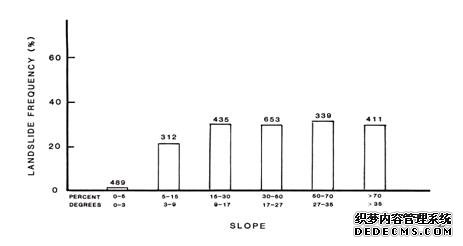
Figure 8 Landslide frequency vs. slope angle
These observations show that the applied force on the clay due to the gravity from the earth influences the frequency of landslide a lot, because the force that is paralleled with the sliding direction due to the gravity is dependent on the angle of the slope, the variation of frequency of landslide varies with different slope angles shows that the applied force on the clay influences the frequency of landslide occurrence, and normally the higher applied force leads to higher frequency of landslide, because that the higher slope angle leads to higher frequency of landslide.
However, the frequency of landslide does not increase without limit when the angle of slope increases, which means the slope angle is not the only issue that needs consideration when talking about the applied force on the clay influencing the landslide’s frequency, the strength of the underlying material cannot be considered independently with the slope angle. And as Kirkby and Carson (Carson and Kirkby, 1972)reported already, 35 degrees is actually the critical angle of the slope, the massive and highly competent materials like granite can keep vertically without threat of potential failure.
In the meantime, the effect of slope angle depends on the rock type also, like shown in below figure, the relationship between the slope angel and the rock type is presented, the data is from the database of San Mateo County. In the graph, the proportion of each rock type exists in six slope intervals is represented with the size of the circles. It could be concluded that the nature of the underlying bedrock affects the slope’s distribution a lot. The greatest proportion of granite (gr) stands at steep slope angles, while the alluvium (Qal) shows remarkable tendency at slopes of 0-5 percent.
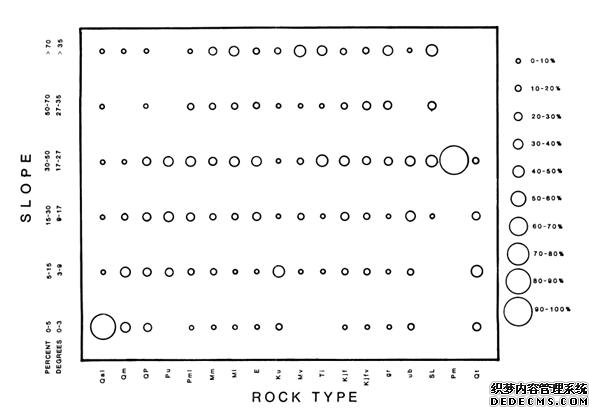
Figure 9 Slope distribution vs. rock type
The data concludes that greater potential energy is provided by steeper slopes to cause failure, which also represents the materials with higher strength. The trade-off between increased strength and increased driving force appears to decrease the effect of angle of slope on the slopes that have angles over 15 percent. The slopes that have angles higher than 15 percent can be affected more by the rest factors that influence the susceptibility of landslide.
In conclusion, the applied force on the clay influence the frequency of landslide a lot, normally higher angle of slope induces high frequency of landslide, especially for the slopes with angle less than 15 percent; while for the slopes with angle over 15 percent, remaining factors affect the frequency of landslide also. And to dig further the influence of slope angle on frequency of landslide, the nature of the rock type should be studied at the same time, because for different types of rock, the angles of slopes changes also.
Proposed plan
Sep. 2015-Oct. 2015: Literature review on the effect of clay on landslide.
Nov. 2015-Jan.2016: Choose an area where landslide occursfrequently, collect relevantdata (rainfall data and soil type, frequency of landslide) through different ways, to study the effect of water content on the frequency of landslide.
Feb. 2016-Apr. 2016: Collect the official data about the angles of slopes and the frequency of landslide through different ways, study the effect of angles of slopes (applied force) on the frequency of the landslide.
May 2016-Jun. 2016: Write the final report to consolidate the results gotten, prepare the slides for oral defense, to rehearse for oral defense.
Reference
ALEOTTI, P. & CHOWDHURY, R. 1999. Landslide hazard assessment: summary review and new perspectives. Bulletin of Engineering Geology and the Environment, 58, 21-44.
ARATTANO, M. & FRANZI, L. 2003. On the evaluation of debris flows dynamics by means of mathematical models. Natural Hazards and Earth System Science, 3, 539-544.
BLANC, R. P. & CLEVELAND, G. B. 1968. Natural slope stability as related to geology, San Clemente area, Orange and San Diego Counties, California.
BRABB, E. E. 1987. Analyzing and portraying geologic and cartographic information for land-use planning, emergency response, and decision making in San Mateo County, California. Proceedings of the GIS, 87, 362-374.
CARSON, M. A. & KIRKBY, M. J. 1972. Hillslope form and process, Cambridge University Press Cambridge.
CHRISTENSEN, B. T. 1992. Physical fractionation of soil and organic matter in primary particle size and density separates. Advances in soil science. Springer.
JENNINGS, C. W., STRAND, R. G., ROGERS, T. H., BOYLAN, R., MOAR, R. & SWITZER, R. 1977. Geologic map of California, Division of Mines and Geology.
LEGGET, R. F. 1939. Geology and engineering.
RADBRUCH-HALL, D. H. & CROWTHER, K. 1973. Map showing areas of estimated relative amounts of landslides in California.
ROTH, R. A. 1983. Factors affecting landslide-susceptibility in San Mateo county, California. Bulletin of the Association of Engineering Geologists, 20, 353-372.
|
 |
|||
| 网站地图 |

